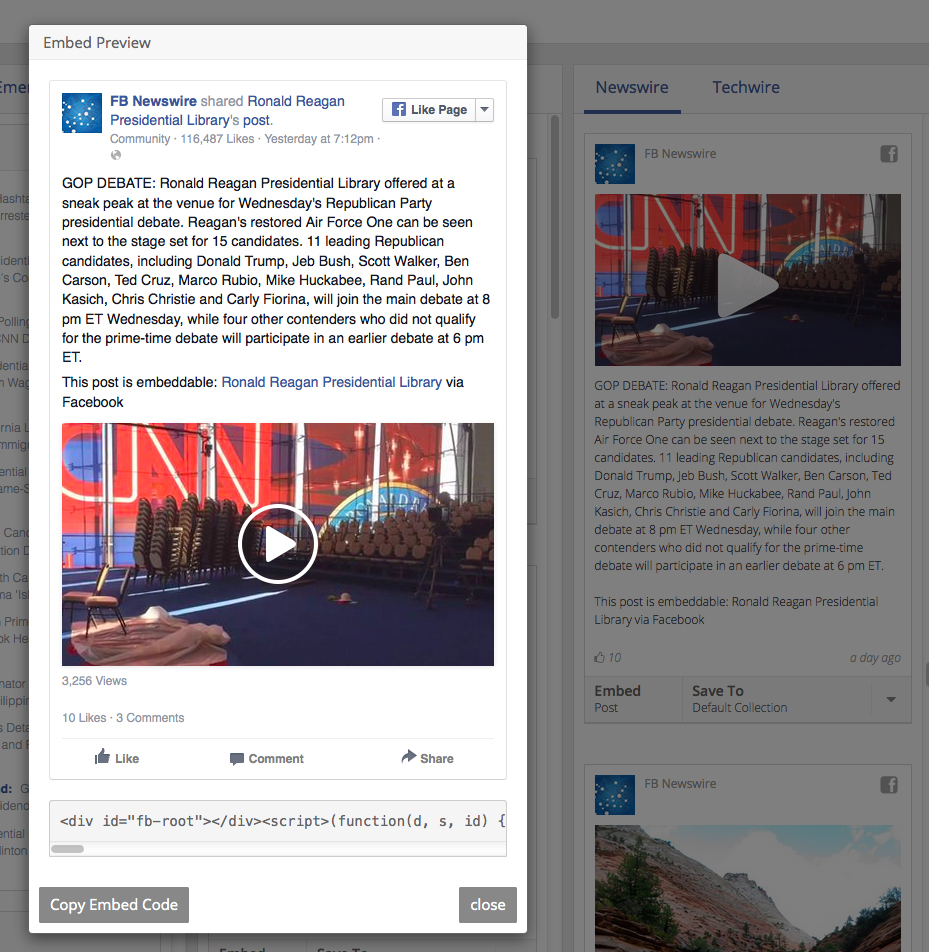As communications professionals, it’s imperative that we stay ahead of emerging trends in the digital sphere and leverage all available tools in order to keep our fingers on the news pulse at all times. For a majority of journalists and PR pros, Twitter remains the go-to source for following along with breaking news/ major events in the world in real time. If there’s a major story, there’s a good shot it was first reported on the Twitter waves before ever appearing in an online article. Well, Facebook recently unveiled a new tool that could make major waves in the media sphere as well. That tool is called Signal and it aims to give Facebook and Instagram more of a presence in news articles that readers consume daily.
So, what is it?
Facebook describes it as “a free discovery and curation tool for journalists who want to source, gather and embed newsworthy content from Facebook and Instagram, across news, culture, entertainment, sports and more—all in one place.” If you haven’t yet heard of it, I’m willing to bet you soon will. At a recent conference I attended in Orlando—hosted by the Professional of Society Journalists— one session was paused so that all attendees could download the tool before the speaker continued. It’s that important.
According to a description on the Signal launch page, the program aims to give journalists a look at what is trending on the social network, enabling them to embed that content in stories they are writing. Facebook Signal starts by showing what’s trending across the platform, and allows users to dig into public posts. There’s a search functionality built into the platform and Signal welds existing curation tools with brand new ones from Facebook in a clean and easy-to-read dashboard.
So, what does it look like?
Newswire, a scrolling feed of vetted stories trending on Facebook occupies one of three prominent columns on the dashboard’s landing page. Users familiar with CrowdTangle might recognize the column in the middle, Trending Posts, which contains a stream of posts that are gathering momentum on Facebook. This feature is offered in partnership with CrowdTangle, which has worked closely with BuzzFeed, Vox and others to identify posts that are growing in popularity across these platforms.
The column on the left of the page is operated by Trending Now, a version of the trending stories sidebar every Facebook user has seen day after day for years. This column also underscores popular news, but with a caveat: rather than listing trending stories that are personalized to each other (like Trending Post), it scours Facebook for the most popular topics across the entire social network and displays them in a list. Also new to Trending Now is a tab for Emerging Trends, which identifies burgeoning stories as they surface on the network.

Signal includes a plethora of entirely brand new tools as well. A Leaderboards tab dissects figures that are being discussed the most at any given moment—whether it be actors, politicians, authors, musicians, sports stars, etc., enabling journalists to craft articles around prominent figures. The dashboard also allows users to save images and posts collected from Facebook and Instagram, providing an easy-to-use embedding function.


So, why is it important?
Successful PR campaigns not only align with emerging trends, but they push the boundaries. Staying on top of current affairs and news is imperative, and that means using any and all of the tools that can help facilitate the newsgathering process. Signal appears to be the latest and greatest.
For Facebook, the biggest advantage is, of course, its enormous user base of nearly 1.5 billion users. With Facebook Signal, the aim is to help journalists keep tabs on all the important conversations happening in real time. In doing so, it will help media organizations cover stories that people are interested in reading.
So, what’s next for us, as PR pros?
Right now, the platform is only available for journalists. Journalists may request access to Signal for free, but they need to provide a full name, personal Facebook URL and work email. This will help the company ensure the service remains exclusively available to only media for the moment.
But that doesn’t mean—as PR professionals—that we don’t need to get smart about the tool. Read up on it. Learn its functionality inside and out, because the better we know the media industry and the tools its professionals are using, the better we can tailor our pitches and communications and the better we can do our job.
Like I said, if you haven’t heard about it yet, I’m willing to bet you soon will.
